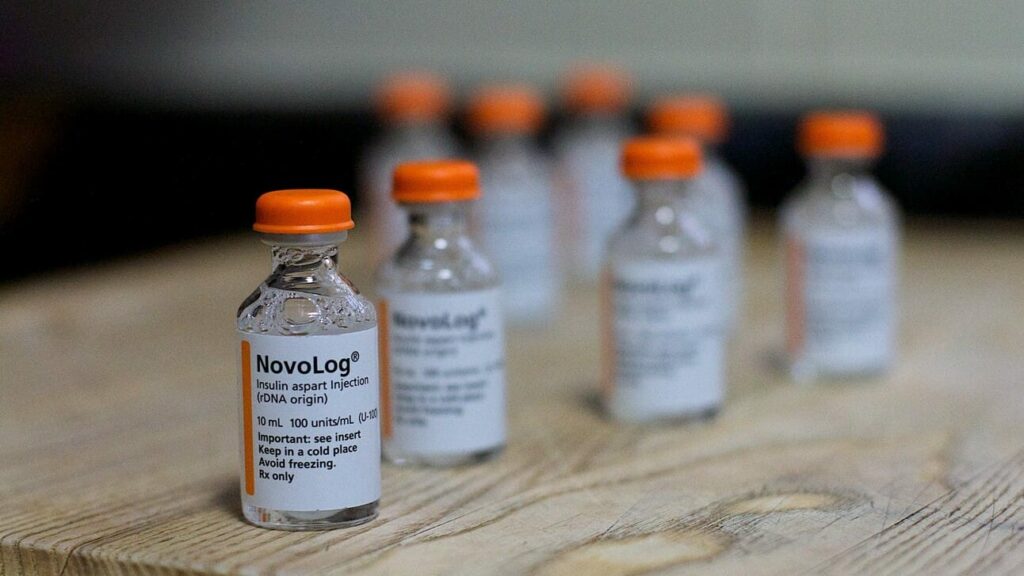If you want to search Cost Curve back issues or link to anything you read here, the web links and archive are online at costcurve.beehiiv.com.
This is a great Associated Press piece about the reality of Joe Biden’s drum-beating around $35 insulin: it’s fantastic politics even if the practical impact of Biden’s policies is pretty narrow.
KFF’s Drew Altman sums up the whole article with this incredibly concise (and accurate) take: “It is about political signaling in a campaign much more than it is about demonstrating for people that they benefit from the insulin cap.”
To state the obvious: Biden delivered a $35 cap for patients in Medicare, which is a legit policy achievement. Everything else is politics.
The reality is that the insulin cost-burden issue has more or less been solved across the system (the AP story kind of scratches the surface here). Between the Medicare provisions, state laws, and — most importantly — an increasingly watertight safety net of pharma-funded patient assistance, pretty much all Americans should have access to $35 insulin.
I’m more and more interested in anecdotes about patients who are still having issues. The AP story has two:
A 42-year-old woman without insurance who “gets insulin for around $16 per month thanks to steep discounts at her local clinic.” But that $16 can go to $500, the story says, if her husband exceeds some sort of “monthly limit.” I have no idea what kind of program that is, or why she can’t access the $35 patient assistance offered by all the insulin makers.
A insured 56-year-old man who paid about $250 for “four weeks to eight weeks” of fast-acting insulin, but who now pays half as much after a Novo price cut. Not sure of the dynamics here, either, since the list price cut probably shouldn’t have had an impact on the patient cost (unless there was coinsurance), and, beyond that, copay assistance should be delivering a lower price.
I’m interested in hearing from you all: can you all give me some hypotheticals in which patients in the United States should have to pay more than $100 a month for insulin?*
I assume there may be some copay accumulator situations, and maybe some non-Medicare/Medicaid federal-plan beneficiaries.
Who else? I’m sure, with the complexity of the system, that I’m missing some scenarios. Please help me fill in those gaps.
* There is probably a separate conversation on whether patient support is accessible enough or if there are hurdles to people taking care of beneficial programs that exist. I know this is an area where a lot of time and effort has gone into making things frictionless, but I’ll cede that there are folks who could benefit but don’t.
Takeda is out with its annual pricing report, a low-on-context one-pager that provides the key numbers and not much else. Those numbers?:
List price: Up 4.4%
Net price: Up 3.5%
As I’ve mentioned before, the annualized list- and net-price changes used to tell a fairly consistent story about falling net prices. There were differences in degree — some companies were absolutely drowning while others were treading water — but the same phenomenon seemed to be at play across the board.
Now, that narrative is more complicated. To be clear: no company has gained the ability to raise net prices in a remotely excessive way, but there are signs that certain companies, in certain areas, have at least stopped the deflationary spiral and are now pretty much just keeping up with inflation.
What that suggests to me is that this is further evidence of the segmentation of the industry into two models: one built around volume and competition, where declining net prices are a natural feature of the environment (think diabetes), and one built around increasingly targeted populations, where net prices tend to follow a pattern of modest (i.e. inflation-esque) increases over time.
I don’t think one model here is necessarily better than the other, commercially or reputationally. But those two kinds of markets operate under fundamentally different rules, and the better that is understood, the less pricing can be weaponized by those looking for blunt solutions or quick political wins.
This is a must-read Pink Sheet story (and, I think, outside the paywall) about how PBMs, responding to incentives in the the Inflation Reduction Act, may place price-controlled medicines on higher formulary tiers or otherwise restrict access. It highlights the misaligned incentives that discourage PBMs from favoring the cheapest drugs and encourage prescribing of high-price, high-rebate products. The general argument should be familiar to dedicated Cost Curve readers, but it’s laid out incredibly clearly in the Pink Sheet piece.
Along similar lines, Avalere has a new analysis of how generic drugs are being covered in Medicare Part D. the short version is that, over the last decade, PBMs have moved a ton of generic drugs to higher formulary tiers, which has — in turn — more than doubled what patients pay out of pocket. It’s a useful companion to the Pink Sheet story, demonstrating how the system can systemically discourage use of cheap therapies.
The Washington Post has a look at the struggles of the World Health Organization to pass a pandemic treaty. It’s long on narrative and short on details about where the process goes from here, but other reporting suggests that some of the more problematic elements of the effort — mainly around IP — have been dropped.
Cover art via Flickr user Alan Levine.
If this email was forwarded to you, and you’d like to become a reader, click here to see back issues of Cost Curve and subscribe to the newsletter.





